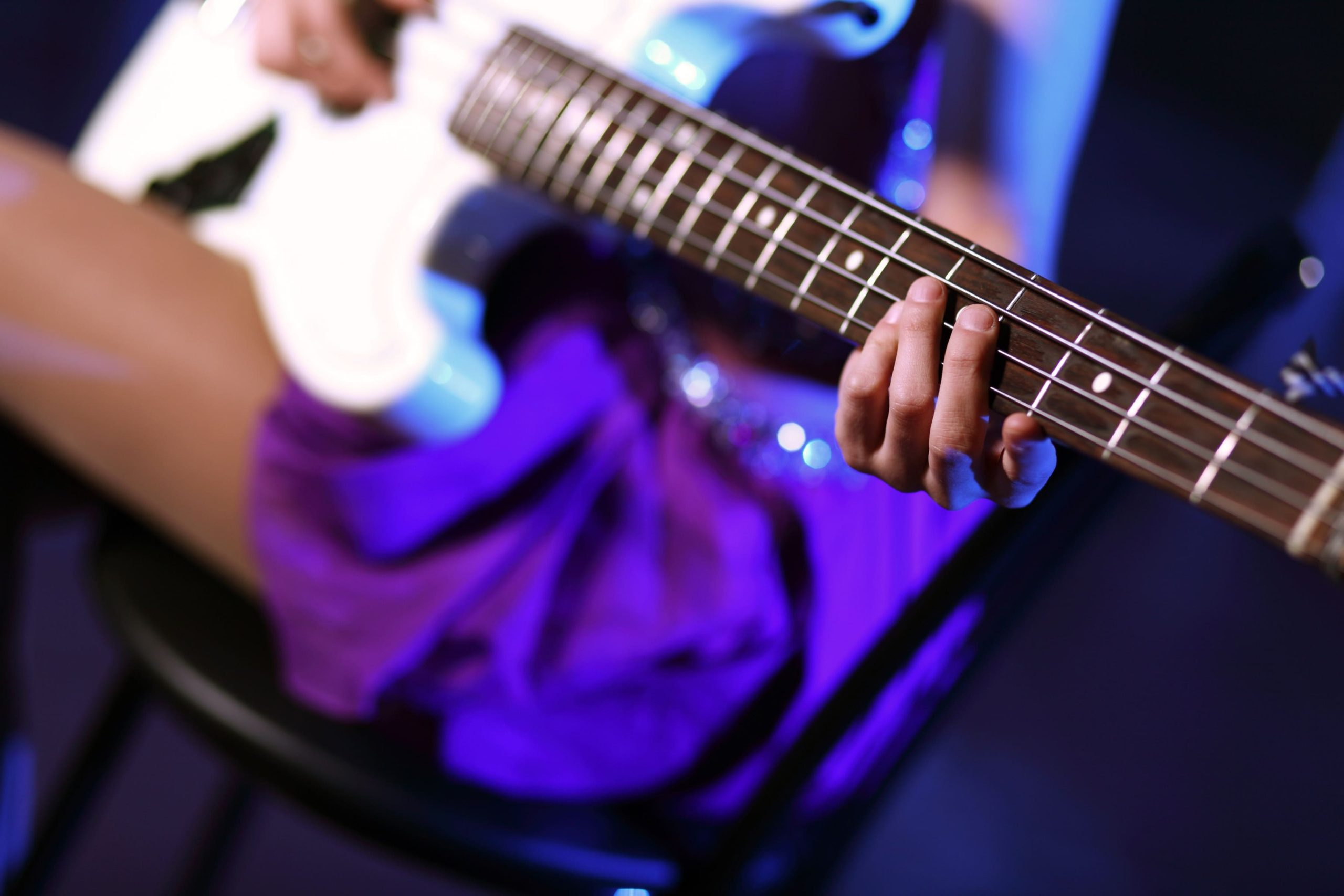Bass Guitar Fingering Chart: Mastering Melodies
As a bass player, one of the most valuable tools you can have at your disposal is a bass guitar fingering chart.
Introduction to Bass Guitar Fingering Chart
The Importance of the Fingering Chart
Why is a fingering chart so important? It provides a visual representation of where to place your fingers on the fretboard to create different notes and chords. It’s essentially a roadmap to your bass guitar’s fretboard. Whether you’re just starting out or have been plucking the strings for years, these charts are indispensable tools for mastering the instrument. Let’s dive into the world of bass guitar fingering charts and discover how they can elevate your playing.
Understanding the Bass Guitar Neck
Before diving into the chart, it’s essential to understand the structure of your bass guitar’s neck. Each fret represents a half step in pitch. Moving up the neck increases the pitch, while moving down decreases it.
Reading a Bass Guitar Fingering Chart
Reading a fingering chart is like learning a new language. Each symbol, line, and number has a specific meaning, indicating fret numbers, string names, and finger placements. Understanding how to interpret these elements is crucial for applying the chart to your playing.
Understanding the Bass Guitar Fingering Chart
A bass guitar fingering chart is essentially a roadmap for your fingers. It shows where to place your fingers on the fretboard to produce specific notes, chords, and scales. It’s a visual guide that simplifies the complex layout of the bass guitar’s neck, making it accessible to players of all levels.
Basic Finger Placement and Techniques
The foundation of good bass playing lies in proper finger placement and technique. A fingering chart helps you develop muscle memory for these placements, ensuring accuracy and speed. Techniques such as alternating fingers, muting strings, and maintaining hand position are all covered in this section.
Advanced Fingering Techniques
For those looking to push their skills further, advanced techniques like slap, pop, and tapping offer new ways to express yourself on the bass. Fingering charts for these techniques can guide you through the learning process, providing a visual reference for each new skill.
Scales and Their Importance
Scales are the building blocks of music, and understanding them is crucial for any bassist. Major, minor, and pentatonic scales, among others, are detailed in fingering charts, showing you where to place your fingers for each note in the scale.
Scales are a sequences of notes that form the building blocks of music. They are essential for understanding and navigating the musical framework of any piece. For bass players, mastering scales is crucial because it enhances their ability to create bass lines, improvise, and communicate musically with other musicians. Scales help in developing finger strength and dexterity, and provide a foundation for understanding musical theory, such as key signatures, chords, and harmony.
Here are 5 tips for using finger charts to learn scales on the bass guitar:
- Memorize the Patterns: Finger charts provide visual patterns of where your fingers need to go on the fretboard for each scale. Start by memorizing these patterns one scale at a time, focusing on where each note lies on the fretboard.
- Start Slowly and Use a Metronome: Begin practicing scales at a slow tempo to ensure accuracy in finger placement and note clarity. Use a metronome to gradually increase your speed as you become more comfortable with the scales.
- Practice Consistently: Regular practice is key to mastering scales on the bass guitar. Set aside dedicated time each day to go through the finger charts and play each scale. Consistency will help reinforce muscle memory and improve your fluency.
- Play in Different Positions: Once you are comfortable with a scale in one position, use finger charts to learn how to play the same scale in different positions on the fretboard. This will broaden your understanding and flexibility in using scales across different musical contexts.
- Apply Scales Musically: As you learn scales, try to apply them musically by creating bass lines or improvising over backing tracks. This practical application helps in understanding the functional role of scales in music and enhances your ability to use them creatively in your playing.
Chords on the Bass Guitar
Chords refer to the playing of multiple notes simultaneously on a bass guitar, which traditionally focuses on single-note lines. Chords can add harmonic depth and texture to bass playing, and they differ from typical guitar chords due to the lower tuning and thicker strings of the bass. Bass chords often use fewer notes to maintain clarity in the lower frequency range.
Here are 5 tips for using finger charts to learn bass guitar chords:
- Start with Basic Shapes: Begin by learning simple chord shapes using finger charts. Focus on triads (three-note chords) and power chords as they are fundamental and easier to finger on a bass guitar. These basic shapes form the foundation for more complex chords.
- Finger Placement and Spacing: Use the finger charts to understand optimal finger placement and spacing. Since the frets on a bass are wider than on a guitar, proper finger positioning is crucial to play chords cleanly and comfortably.
- Practice Slowly: Take your time to practice forming and playing each chord slowly. This helps in developing muscle memory and ensures accuracy in finger placement. Gradually increase speed as you become more comfortable.
- Use a Metronome: Practice with a metronome to keep your chord playing in time. This will not only improve your rhythmic accuracy but also help in integrating chords smoothly into basslines and grooves.
- Experiment with Different Voicings: As you get more comfortable with basic chords, explore different voicings using finger charts. Voicings refer to the arrangement of the notes in a chord. Trying different voicings can lead to discovering more interesting and unique sounds suitable for various musical contexts.
Practicing with a Fingering Chart
Effective practice is about more than just repetition; it’s about intention and focus. Using a fingering chart as a guide, you can ensure that your practice sessions are productive and that you’re building the right habits from the start.
Incorporating Fingering Charts into Daily Practice
Making fingering charts a part of your daily practice routine can significantly accelerate your learning. They serve as a constant reference, helping you to internalize the layout of the fretboard and the placement of notes, scales, and chords.

Customizing Your Own Fingering Chart
As you progress, you may find that generic fingering charts don’t quite meet your needs. Customizing your own chart allows you to focus on the scales, chords, and techniques that are most relevant to your style and goals.
Resources for Bass Guitar Fingering Charts
There are countless resources available for bass guitar fingering charts, from online databases to printed books. Choosing the right one depends on your learning style, the genres you’re interested in, and the skills you’re looking to develop. Do a search and you can even find some free downloads.
Ignoring the Pinky
Many beginners neglect the pinky, but it’s crucial for good technique. When I built up the strength of my pinky, it changed everything and opened up a whole new ability to expand my playing. Remember, accuracy should come before speed. Practice slowly and increase your speed over time. Consistency is key. Regular practice is the best way to improve your fingering skills. Whether it’s at home or with a band, it makes a tremendous difference in your abilities.

Conclusion
Bass guitar fingering charts are more than just sheets of paper; they’re a key to unlocking the full potential of your instrument. By understanding and utilizing these charts, you can embark on a journey of musical exploration that’s both structured and creative. Whether you’re laying down the groove for a simple song or navigating the complexities of a solo piece, a fingering chart is an invaluable companion on your musical journey.
FAQs
Q: How long does it take to master the bass guitar fingering chart?
A: It varies for every individual. Some may grasp it within a few weeks, while others may take a few months. Regular and deliberate practice is the key.
Q: Can I play the bass guitar without using a fingering chart?
A: Yes, you can. However, a fingering chart can significantly speed up your learning process and help you understand the fretboard better.
Q: I’m having trouble stretching my fingers. What can I do?
A: Start with exercises that don’t require too much stretching and gradually increase the stretch as your flexibility improves. Regular practice and warm-up exercises can help.
Q: Should I always follow the one-finger-per-fret rule?
A: While it’s a useful guideline, there are exceptions. Depending on the musical context, you may need to deviate from this rule for comfort or to achieve a particular sound.
Q: How do I know if I’m reading the fingering chart correctly?
A: Cross-reference the chart with a note on the bass guitar. If the note sounds correct as per the chart, you’re on the right track. Otherwise, re-check your chart and finger position.
With patience, persistence, and the right resources, mastering the bass guitar fingering chart is well within your grasp.




